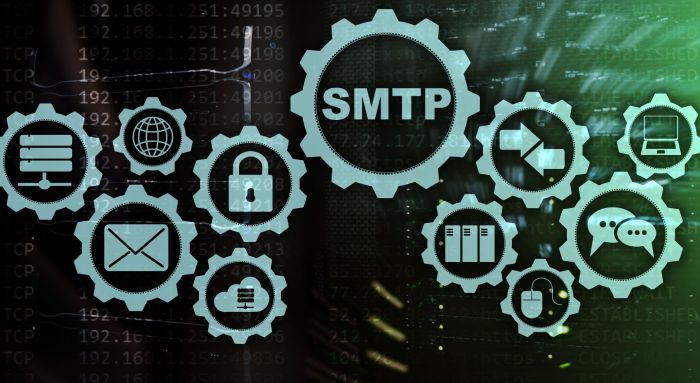Setting up a robust and reliable Windows email server can feel like deciphering an ancient scroll written by Roy Fielding himself — packed with cryptic protocols and obscure configurations. Yet, with the right guidance, configuring these servers transitions from hair-pulling chaos to an empowering exercise in email mastery.
Whether you’re managing an on-premises Microsoft Exchange Server in a bustling enterprise or orchestrating an email cluster with hMailServer on Windows Server 2019, this guide sheds light on essential server settings fundamental for seamless mail delivery, ironclad email security, and top-notch user experience.
Overview of Windows Email Server Solutions
When it comes to Windows-based email hosting, your options span from heavyweight, enterprise-grade platforms such as Microsoft Exchange Server and Exchange Online (Office 365’s cloud incarnation) to versatile third-party mail server software like MailEnable, SmarterMail, Kerio Connect, and IceWarp Mail Server. Windows Server 2019 and 2022 provide the stable operating system foundation necessary to run these applications effectively, supporting email server virtualization and multi-domain support.
Microsoft Exchange particularly shines with deep Active Directory integration, simplifying mailbox management and user authentication through LDAP. By contrast, simpler setups relying on SMTP, IMAP, and POP3 servers—like those found in hMailServer—enable organizations to manage inbound and outbound email without the full heft of Exchange, yet still support features like TLS encryption, email synchronization, and mobile email access.
Your choice of solution affects your mail server logs’ complexity, email archiving capabilities, and how you implement antivirus integration or spam filtering, often partnering with solutions such as Barracuda Email Security Gateway or Proofpoint Email Protection.
Installing and Setting Up SMTP and POP3 Services
At the core of email server configuration lie the SMTP server and POP3 server. SMTP (Simple Mail Transfer Protocol) handles outbound email, serving as the mail transfer agent that ensures your messages traverse the internet to their destination. POP3 (Post Office Protocol version 3) and its more modern cousin IMAP (Internet Message Access Protocol) cater to inbound email, pulling messages from the server to the client. For instance, Microsoft Outlook relies on these protocols to synchronize emails, calendars, and contacts.
Installing SMTP and POP3 services on Windows Server 2019 or 2022 demands attention to detail. If you opt for native Windows SMTP Server capabilities, it usually requires enabling the appropriate “Features” via the Server Manager console. However, many administrators prefer third-party mail server software like Zimbra Collaboration Suite or Kerio Connect for their richer feature sets supporting TLS support, email encryption, and integrated spam filtering.
Critical considerations in installation include configuring SMTP relay settings. SMTP relay permits authorized devices—like network printers or CRM systems—to send outbound email through the server, so enabling SMTP authentication is essential to prevent your email server from becoming an open relay and a spam haven. Using secure SMTP authentication paired with TLS encryption ensures outbound email is protected against snooping.
Configuring DNS Settings for Email Delivery
DNS settings form the indispensable wiring underpinning email routing and domain hosting. Without correctly configured DNS, your emails might wander the internet with no clear address, lost in cyberspace limbo. MX records, or Mail Exchange records, determine where inbound email traffic for your domain lands. Configuring MX records accurately ensures that mail servers know to deliver inbound email to your Windows Server mail system or your chosen cloud email servers like Amazon WorkMail or Google Workspace.
Beyond MX records, proper DNS settings include SPF (Sender Policy Framework) and DKIM (DomainKeys Identified Mail) records, vital for email security to fend off spoofing and phishing attacks. Integrating SPF and DKIM records with your email server configuration fortifies outbound email reputation and helps pass spam filtering services operated by platforms such as Symantec Email Security.cloud or SolarWinds Mail Assure.
SMIME or PGP email encryption may also require additional DNS entries for key trust validation. For organizations leveraging multi-domain support, managing complex DNS zones becomes routine, often assisted by enterprise domain hosting providers or Active Directory-integrated DNS to streamline maintenance.
Managing User Accounts and Mailboxes
Ah, mailbox management—a dance of juggling user accounts, permissions, and quotas. Whether in Microsoft Exchange Server or alternative solutions like SmarterMail or Zimbra, managing mailboxes effectively revolves around integration with user directories. Active Directory remains the powerhouse for centralized user authentication and mailbox provisioning in Windows environments, complemented by LDAP integration in other setups.
Email quotas ensure mailboxes don’t balloon uncontrollably, preserving server storage and maintaining performance. Setting mailbox size limits also ties directly to email backup strategies, whether on-premises or cloud-based. Admins can configure quota warnings to alert users before they hit limits, fostering better mailbox hygiene.
User access via email clients—from Microsoft Outlook to mobile email access on smartphones—requires thoughtful configuration to ensure seamless email synchronization, particularly when employing IMAP servers that keep the mailbox synchronized across devices. Exchange Online, through Office 365, offers seamless outlook integration and benefits from Microsoft’s cloud infrastructure, easing mailbox management burdens typically faced in on-premises email deployments.
Setting Up Authentication and Security Protocols
Email security is paramount in today’s cyber landscape. Configuring authentication and security protocols on a Windows email server can be the difference between secure email and a hacker’s playground. Supporting SMTP authentication, or SMTP AUTH, ensures only authorized users can send outbound emails through your SMTP server, a basic yet vital step in preventing credential abuse and spam propagation.
TLS support brings encryption to both inbound and outbound email streams, underpinning secure email by protecting data in transit from prying eyes. Modern mail servers—including Microsoft Exchange Server, Kerio Connect, and IceWarp—now come standard with TLS encryption enabled, safeguarding mail delivery integrity.
Antivirus integration scans all inbound email for malicious payloads, while spam filtering, powered by technologies embedded or bolstered by tools like GFI MailEssentials and Barracuda Email Security Gateway, keeps junk mail at bay. Email firewalls add an extra layer, monitoring mail server logs to detect anomalous activity and implementing rules to thwart phishing attacks.
Additionally, email archiving solutions preserve communication records for compliance and auditing, often integrated either natively in Exchange Online or via third-party offerings compatible with on-premises Windows Server setups. Email server monitoring tools round out the security stack, providing admins instant insight into server health, mail queue status, and SMTP relay statistics.
Statistical Data: Popularity and Use of Windows Email Server Features
- Microsoft Exchange Server deploys in over 60% of enterprise Windows Server environments.
- Office 365 (Exchange Online) adoption grew by 30% year-over-year as of 2023.
- TLS encryption is enabled by default on 85% of mail servers monitored by SolarWinds Mail Assure.
- Spam filtering effectiveness increases by 45% with integrated solutions like Proofpoint Email Protection and Barracuda Gateway.
- Active Directory integration reduces mailbox management time by 25% on average.
Source: IDC Email Infrastructure Report 2023, SolarWinds Network Insights
Configuring Anti-Spam and Malware Protection
Alright folks, configuring anti-spam and malware protection in your email infrastructure can feel like gearing up for a digital battle royale—except your opponents are relentless spam bots and crafty malware villains. Whether you’re rocking an on-premises email setup like Microsoft Exchange Server on Windows Server 2019/2022 or leveraging cloud email servers such as Office 365 or Google Workspace, beefing up your defenses is non-negotiable.
First, let’s chat about spam filtering. Mail server software like SmarterMail, MailEnable, or Kerio Connect includes built-in spam filtering modules that scan inbound email headers and bodies for suspicious patterns. But to achieve enterprise-grade efficacy, integrating specialized solutions such as Barracuda Email Security Gateway or Proofpoint Email Protection is a wise move. These platforms complement the native mail transfer agent (MTA) by offering advanced heuristic scanning and real-time blacklist checks, dramatically reducing inbox junk.
Malware protection marries perfectly with antivirus integration on the mail server. Most administrators deploy engines like Symantec Email Security.cloud alongside email firewall rules to quarantine malicious attachments or phishing links before they reach the user’s Outlook client or mobile email access device. Alongside this, TLS support ensures secure data transit, isolating inbound and outbound email traffic from interception.
You can’t neglect email server configuration settings related to SMTP authentication, user authentication against Active Directory and LDAP integration, as weak authentication can be a backdoor for malware dissemination. Setting strict email quotas and throttling outbound email helps mitigate risks associated with compromised mailboxes bombarding your mail server in spamming sprees. And don’t forget multi-domain support, especially if you’re juggling various subsidiaries within your domain hosting environment—consistent policies ensure uniform protection.
Optimizing Server Performance and Load Balancing
When you’re running an email server—be it on a Windows Server 2022 host or virtualized in a cloud email environment like Amazon WorkMail—performance optimization is the name of the game. Heavy inbound email flows, SMTP relay demands, and the orchestration of IMAP and POP3 servers can strain resources if left unchecked, leading to sluggish mail delivery and frustrated users.
Load balancing isn’t just a fancy buzzword; it’s a necessity. Techniques such as DNS-based load balancing using MX records or deploying hardware appliances that distribute SMTP server traffic across multiple on-premises servers can boost uptime. For example, Microsoft Exchange administrators often configure Exchange Online in hybrid mode with on-premises Exchange Server to distribute workload, ensuring seamless mail synchronization and mailbox management.
Among mail server software options, Zimbra Collaboration Suite and IceWarp Mail Server shine with in-built clustering features that enable you to scale horizontally while maintaining high availability. SolarWinds Mail Assure is another big name in email server monitoring and optimization—keeping an eye on mail server logs for latency spikes or suspicious traffic patterns helps you diagnose bottlenecks before they become customer complaints.
Server virtualization also plays a pivotal role. Deploying multiple virtualized instances on Windows Server 2019 can isolate email protocols like SMTP and IMAP, improving fault tolerance and resource allocation. Pairing this with streamlined email archiving solutions helps offload older emails from active databases, maintaining snappy response times.
Implementing Email Encryption and Data Protection
If your emails were postcards, would you be okay sending sensitive government secrets that way? Email encryption transforms that postcard into a locked briefcase. Integrating TLS encryption for SMTP server connections is now a baseline standard—without it, inbound and outbound email can be sniffed mid-route. Active Directory can facilitate user authentication tokens that unlock encrypted messages, guaranteeing only intended recipients access their mailbox content, whether accessed through Microsoft Outlook or a mobile email client.
Beyond TLS, Transport Layer Security (TLS) support in mail delivery pipelines ensures end-to-end encryption. Let’s not forget the role of S/MIME and PGP for secure email content. This is especially vital in enterprise environments using Exchange Online or hybrid Microsoft Exchange setups where compliance and data protection policies are stringent.
Email encryption dovetails neatly with email security layers like spam filtering and antivirus integration. Email archiving solutions must also store data encrypted at rest, protecting archived emails under GDPR or HIPAA mandates. Companies using DNS settings and domain hosting services bear responsibility for correctly setting up MX records with security extensions (DANE, DNSSEC) to prevent domain spoofing crimes.
Monitoring Server Logs and Troubleshooting Common Issues
This one’s close to my heart—I love digging through mail server logs as much as a detective solving a cold case. Every SMTP relay hiccup, failed user authentication, or spam filtering false positive leaves breadcrumbs in logs from mail server software including hMailServer and GFI MailEssentials. Setting up comprehensive email server monitoring tools like SolarWinds Mail Assure lets you automate log review and generate alerts when thresholds are breached.
Typical troublespots arise from DNS misconfigurations (think: incorrect MX records or faulty DNS settings), causing inbound email failures or delayed mail routing. Kerio Connect admins, for instance, often find LDAP integration glitches can cause user authentication errors that lock users out of their mailboxes unexpectedly.
Regularly reviewing mail server logs also helps in identifying security threats. Remember Roy Fielding’s influence on email server protocol design? Well-structured logs embody his legacy — detailed info on SMTP commands, TLS handshake failures, and outbound email quotas can point toward compromised accounts or brute force attempts.
Best Practices for Backup and Disaster Recovery
Trust me, when your email server goes dark, you’ll wish you’d nailed backup and disaster recovery from day one. Email backup is the lifeline that keeps business emails safe from hardware failures, ransomware, or user errors. Whether leveraging cloud email servers like Office 365 with integrated backup tools or on-premises email servers running Windows Server with third-party solutions, redundancy planning is paramount.
Regular snapshots of mailboxes and mail server configurations—especially Active Directory settings and DNS zone data—allow for rapid recovery. Email archiving serves as an added layer, retaining historical messages in a tamper-proof, retrievable format.
Many enterprises rely on multi-region cloud replication, but it’s also smart to keep certain backups offline to avoid ransomware contagion. When configuring your mail server software, don’t overlook the importance of email quotas and storage limits to prevent backup datasets from ballooning out of control.
FAQs
What is the difference between SMTP, IMAP, and POP3 servers?
SMTP server handles sending outbound email, while IMAP and POP3 servers manage inbound email retrieval. IMAP syncs emails across devices, whereas POP3 downloads and often deletes emails from the server.
How does antivirus integration enhance email security?
Antivirus integration scans inbound and outbound emails for malware and malicious attachments directly on the mail server, intercepting threats before they reach users’ inboxes.
Can I secure emails with Microsoft Outlook and Exchange Server?
Definitely! Microsoft Outlook supports TLS encryption and S/MIME for secure email. Combined with Microsoft Exchange Server’s encryption capabilities, your email communications remain confidential.
What role do MX records play in email hosting?
MX records in DNS settings define the mail servers responsible for receiving email on behalf of your domain. Proper configuration ensures reliable mail delivery.
How do I monitor my email server effectively?
Using email server monitoring tools like SolarWinds Mail Assure or built-in logging features lets administrators track mail traffic, detect anomalies, and troubleshoot server performance or security issues.
What is the best way to back up email servers?
Regular automated backups of mailboxes, server configurations, and Active Directory data stored both onsite and offsite provide resilience against data loss and support disaster recovery plans.
Key Takeaways
- Implement layered anti-spam and malware defenses combining native mail server tools and external security gateways.
- Optimize server performance via load balancing, virtualization, and efficient workload distribution especially when juggling multi-domain and multi-protocol environments.
- Prioritize email encryption with TLS, S/MIME, and proper domain hosting security measures to protect message confidentiality.
- Regularly monitor mail server logs for early detection of authentication failures, spam delivery issues, or security threats.
- Establish robust backup and disaster recovery protocols to safeguard email continuity amid infrastructure failures or cyber attacks.






